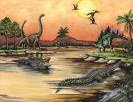Stamford Raffles
While in Singapore, Raffles established schools and churches in the native languages. He allowed missionaries and local businesses to flourish. Certain colonial aspects remained: a European town was quickly built to segregate the population, separated by a river; carriage roads were built and cantonments constructed for the soldiers.
Raffles was pleased at the fact that Singapore had grown exponentially in such short years. The colony was a bustling hub of trade and activity. However, Farquhar's development work was deemed unsatisfactory and Raffles drew up what is now known as the Jackson Plan, and replanned the city according to recommendations of a committee headed by the colony's engineer, Phillip Jackson.
In 1823, Raffles drafted the first constitution for Singapore, which followed a fairly moralistic stance, outlawing gaming and slavery. A specific regulation in the constitution called for the multiethnic population of Singapore to remain as is, and there shall be no crimes based on being a race. He then went to work drafting laws, defining on exactly "what" constituted a crime. Finally, on 9 July 1823, feeling that his work on establishing Singapore was finished, he boarded a ship for home.
With the Singapore matter settled, Raffles turned to his other great hobby - botany. Raffles was a founder (in 1825) and first president (elected April 1826) of the Zoological Society of London and the London Zoo.
He died in London, England, a day before his forty-fifth birthday, on 5 July 1826, of apoplexy. Because of his anti-slavery stance, he was refused burial inside his local parish church (St. Mary's, Hendon) by the vicar, whose family had made its money in the slave trade. A brass tablet was finally placed in 1887 and the actual whereabouts of his body was not known until 1914 when it was found in a vault. When the church was extended in the 1920s his tomb was incorporated into the body of the building.

No comments:
Post a Comment